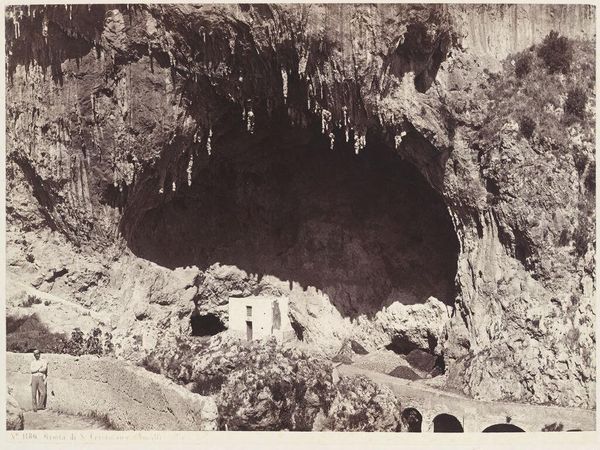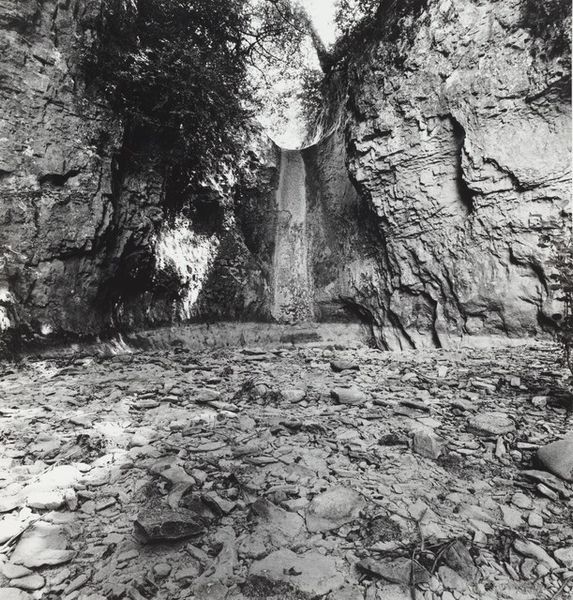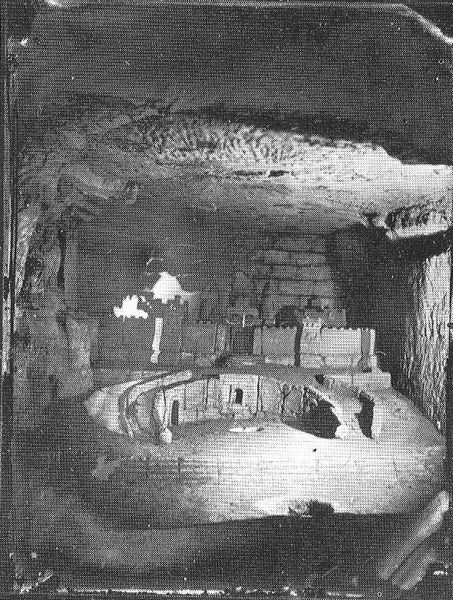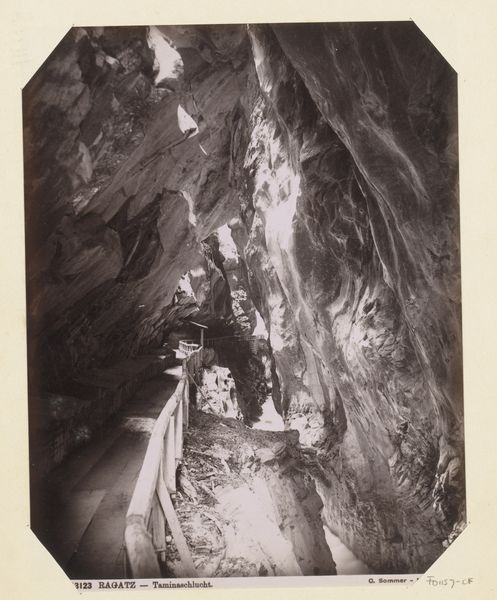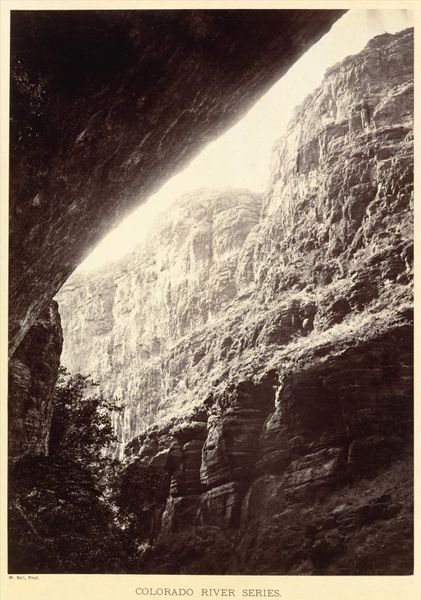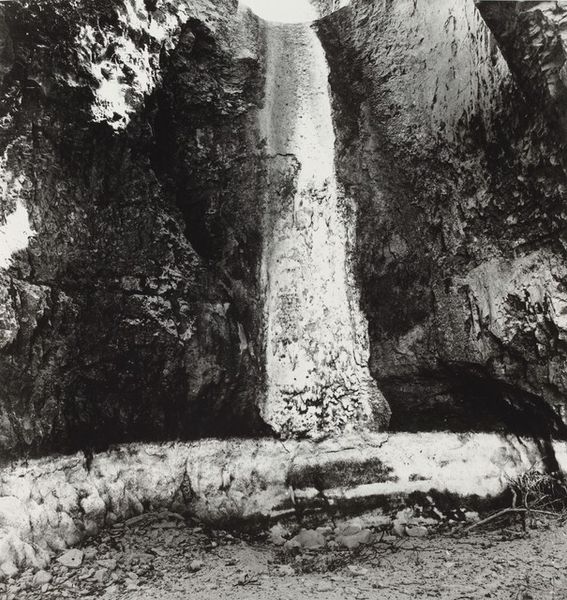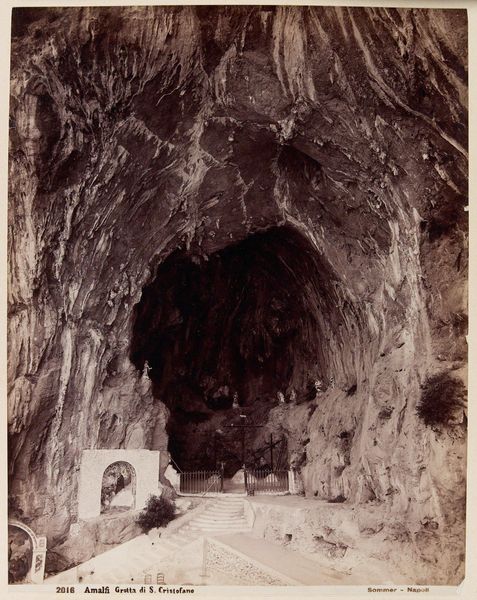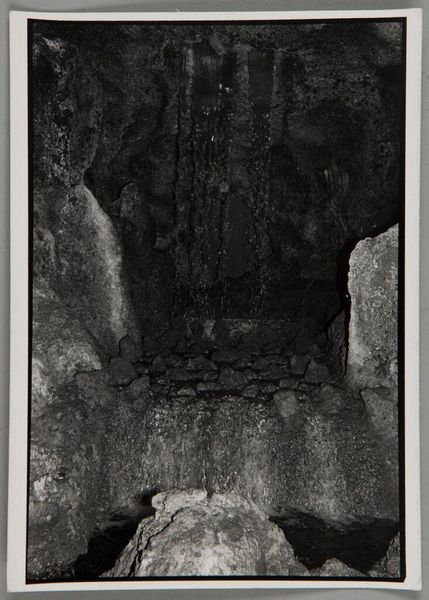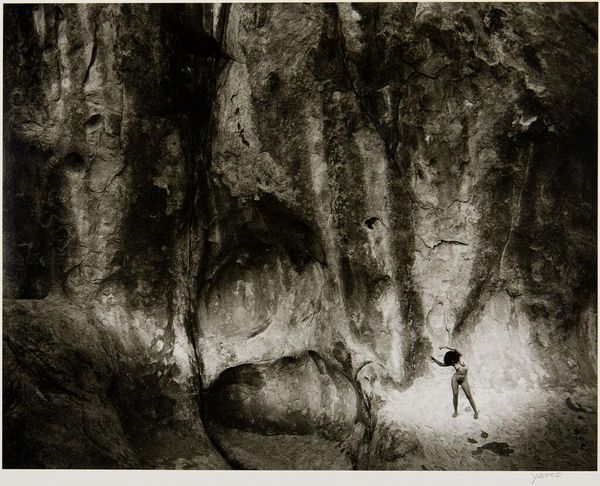
photography
#
sculpture
#
landscape
#
photography
#
geometric
#
monochrome photography
#
monochrome
#
monochrome
Copyright: Ansel Adams,Fair Use
Curator: Ansel Adams captured this intriguing scene of "Onyx Drapes in the Papoose Room, Carlsbad Caverns" in 1942. The work, a stark black and white photograph, presents a very particular perspective on a geological formation. Editor: It’s visually quite striking, almost gothic in its darkness and the downward-pulling forms. The monochrome emphasizes texture and evokes a primal sense of awe, doesn't it? Curator: Absolutely. Consider onyx, its symbolic association with grounding and control. And "drapes" – fabric evokes protection and concealment, associating a feminine interior with natural wonder. Adams isn’t simply showing a cave; he's imbuing it with layers of symbolic meaning. Editor: True, but look at the physical reality: slow-dripping, dissolving rock transformed over millennia, literally the earth breathing and shaping itself. His control of light is just… astounding, but its application exposes process more than metaphor here. Curator: Adams understood light as revelation, not just illumination, transforming that process into more than just geology, more like destiny unfolding within the earth itself. These "drapes," they resemble temple curtains, leading the eye into a sacred space. Editor: While the spiritual interpretations resonate, I’m pulled back to thinking of photography's chemistry. The way Adams used exposure and development techniques to mold this scene from shadow to almost blinding light demonstrates a mastery of process that gives these cave features their sharp presence. He uses industry to reveal nature’s artwork. Curator: A synthesis, indeed, highlighting the symbolic power of landscape as both primordial place and crafted artifact. Editor: A constant interaction, right? The natural versus the processed and recorded. Curator: I like your perspective – I see how we might better understand the symbolic heft and even social underpinnings informing works in dialogue with its processes. Editor: Glad we reached an agreement; understanding a process allows the viewer a deeper dive into not just "What," but the "How" of visual storytelling.
Comments
No comments
Be the first to comment and join the conversation on the ultimate creative platform.
